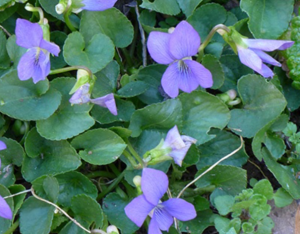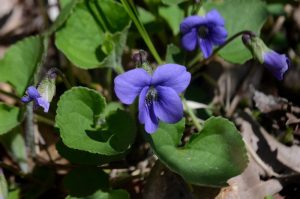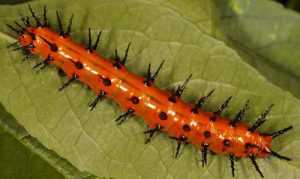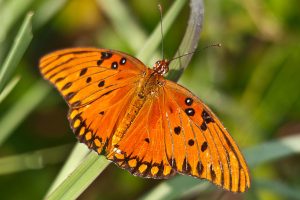You may recognize the delicate, vibrant flowers of the Florida violet (Viola sororia), but did you know that this flower is native to Florida? This annual can add a pop of color to most any garden. Still, it is important to keep the plant’s requirements in mind when considering it. Let’s explore the origins and growing conditions of the Florida violet.

Origins of the Florida Violet
In nature, the Florida violet grows in habitats like open woodlands, meadows, and other shaded clearings throughout the Eastern United States. Besides being kept for its beauty, this native wildflower has historically been used in traditional practices for its mild medicinal properties. Its leaves and flowers are edible in moderation and can be used in herbal teas, salads, or in cooked dishes.

Growing Conditions and Characteristics
The Florida violet is suitable for USDA Hardiness Zones 3 to 7 and typically reaches a height and width of 6 to 8 inches. It thrives in rich, moist, well-drained soil, with a pH above 6, and prefers partial to full shade. The Florida violet is a cool-season plant, so it can withstand cooler temperatures.
The Florida violet is versatile and and makes a great addition to the garden as ground cover, in rock gardens, along edging, as a container plant, or as part of mixed borders. It has dark-green, heart-shaped leaves and beautiful flowers that range in color from purple, white, or yellow and bloom in late winter. This wildflower is popular with pollinators as well. It is a food source for birds and small mammals and a larval host for moths, bees, and butterflies. Specifically, you may find his plant supports Fritillary butterfly (Agraulis vanillae) larvae.

Why Plant Native Species?
While native and non-invasive exotic plants can enhance local ecosystems, invasive exotic species pose a threat to native flora and disrupt ecological balance. In Florida, invasive species like the Mexican petunia and Brazilian peppertree jeopardize native habitats, making it crucial to select appropriate plants for your landscape.Choosing native plants like the Florida violet supports Central Florida’s local ecology by providing food and habitat for native wildlife, like the Fritillary butterfly, while requiring minimal maintenance.
To learn more about invasive plants, click here.

Have a question?
If you have any questions about gardening in Central Florida, please contact UF/IFAS Extension Pasco County at 352-518-0156. For more information on UF/IFAS Extension Pasco County Community Gardens, and how you can join one, visit http://sfyl.ifas.ufl.edu/pasco/. Supervising Agent: Dr. Whitney Elmore.
Follow us!
We have several ways to connect. Visit our Facebook, Instagram, Eventbrite, Blogs, Florida-Friendly Facebook, & Website.
Other Blogs in the Series
- Exploring Florida’s Native Gems: The Black-Eyed Susan
- Exploring Florida’s Native Gems: Beautyberry
- Exploring Florida’s Native Gems: Carolina Jessamine
- Exploring Florida’s Native Gems: The Coontie
- Exploring Florida’s Native Gems: Chickasaw Plum
- Exploring Florida’s Native Gems: The Coreopsis
- Exploring Florida’s Native Gems: Coral Honeysuckle
- Exploring Florida’s Native Gems: The Florida Maple
- Exploring Florida’s Native Gems: The Firebush
More resources:
- UF/IFAS Extension Pasco County
- Dr. Whitney Elmore’s Podcast: Rooted in Florida
- Extension Connection: Florida Friendly Landscaping
Photo Credit:
Featured image: “150429 007 Viola sororia, Taraxicum officinale, common violets and dandelions” by cultivar413 is licensed under CC BY 2.0.
 5
5
